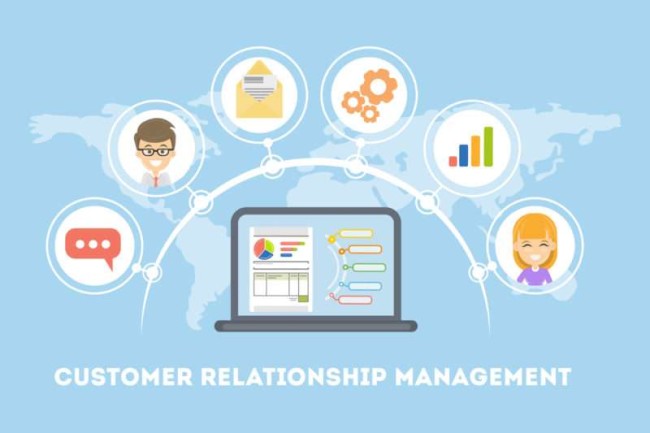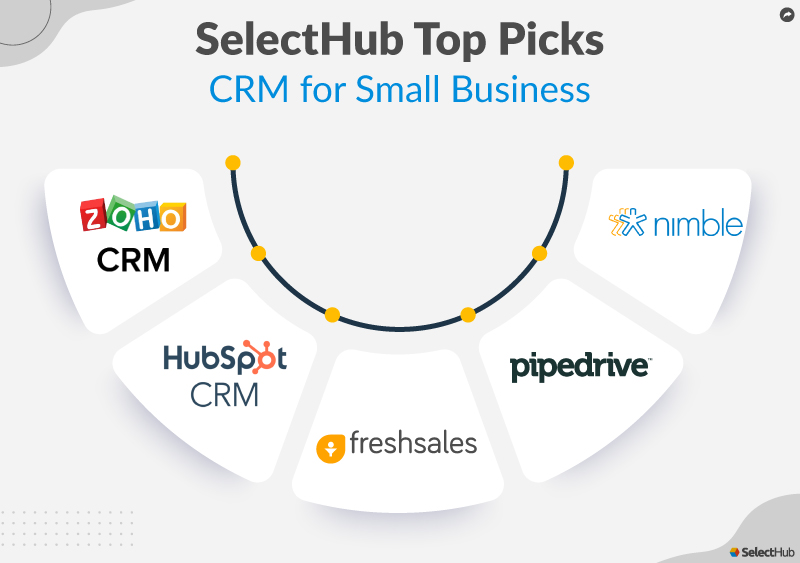
Supercharge Your Business: Seamless CRM Integration with WhatsApp
In today’s fast-paced business environment, staying connected with your customers is paramount. Communication is key, and WhatsApp has emerged as a dominant force in the realm of instant messaging. But how do you harness the power of WhatsApp while keeping your customer relationship management (CRM) system organized and efficient? The answer lies in seamless CRM integration with WhatsApp. This article will delve into the intricacies of this powerful combination, exploring its benefits, implementation strategies, and the future of customer communication.
The Power Duo: WhatsApp and CRM
Before we dive into the specifics, let’s understand why integrating WhatsApp with your CRM is a game-changer. WhatsApp, with its massive user base, offers unparalleled reach and accessibility. It’s where your customers are, and it’s where they prefer to communicate. CRM systems, on the other hand, are the central nervous system of your business, storing crucial customer data, tracking interactions, and enabling personalized engagement. When these two powerhouses are combined, the possibilities are endless.
Benefits of CRM Integration with WhatsApp
The advantages of integrating your CRM with WhatsApp are numerous and far-reaching. Here are some of the most significant:
- Enhanced Customer Engagement: WhatsApp allows for immediate and personal communication. You can send personalized messages, respond to inquiries in real-time, and build stronger relationships with your customers.
- Improved Customer Service: WhatsApp enables quick and efficient customer support. Customers can easily reach out with questions or issues, and your team can provide instant solutions.
- Increased Sales Conversions: By sending targeted promotions, product updates, and special offers via WhatsApp, you can drive sales and increase conversions.
- Streamlined Communication: Centralize all customer interactions within your CRM, providing a 360-degree view of each customer. This eliminates the need to switch between multiple platforms and ensures that all team members have access to the same information.
- Automation and Efficiency: Automate repetitive tasks such as sending welcome messages, appointment reminders, and shipping updates. This frees up your team to focus on more complex and valuable activities.
- Data-Driven Insights: Track and analyze customer interactions on WhatsApp to gain valuable insights into their preferences, behaviors, and needs. This data can be used to improve your marketing campaigns, product development, and overall customer experience.
- Cost Savings: WhatsApp is a cost-effective communication channel compared to traditional methods like phone calls and SMS.
Key Features to Look for in a CRM Integration
Not all CRM integrations with WhatsApp are created equal. When choosing a solution, consider the following features:
Two-Way Messaging
The integration should allow for two-way communication. Your team should be able to send and receive messages, photos, videos, and other media files directly from the CRM interface.
Contact Synchronization
The integration should automatically sync your CRM contacts with WhatsApp, making it easy to initiate conversations with your customers.
Message Templates
Pre-built message templates can save your team time and ensure consistent messaging. Look for a solution that allows you to create and customize templates.
Automation Capabilities
Automation is key to efficiency. The integration should allow you to automate tasks such as sending welcome messages, appointment reminders, and shipping updates.
Reporting and Analytics
Track and analyze customer interactions to gain valuable insights into your business performance. Look for a solution that provides detailed reports and analytics.
Integration with Other Tools
Consider whether the integration works well with other tools you use, such as email marketing platforms and e-commerce systems.
Security and Compliance
Ensure the integration complies with all relevant data privacy regulations, such as GDPR and CCPA. Security should be a top priority.
Step-by-Step Guide to CRM Integration with WhatsApp
Integrating your CRM with WhatsApp can seem daunting, but it doesn’t have to be. Here’s a step-by-step guide to help you get started:
1. Choose a CRM and WhatsApp Integration Provider
Several CRM systems offer native WhatsApp integration, while others integrate through third-party providers. Research and choose a solution that meets your specific needs and budget. Consider factors such as features, pricing, ease of use, and customer support.
2. Set Up a WhatsApp Business Account
If you haven’t already, create a WhatsApp Business account. This is a separate app designed for businesses, offering features such as business profiles, automated messages, and quick replies.
3. Connect Your CRM to WhatsApp
Follow the instructions provided by your CRM or integration provider to connect your WhatsApp Business account. This typically involves authenticating your account and granting the integration access to your data.
4. Configure Your Settings
Customize your integration settings to meet your specific needs. This may include setting up automated messages, creating message templates, and configuring contact synchronization.
5. Train Your Team
Provide your team with training on how to use the integration. Ensure they understand how to send and receive messages, manage customer interactions, and utilize the available features.
6. Test and Refine
Test the integration thoroughly to ensure it’s working correctly. Make any necessary adjustments to optimize its performance. Gather feedback from your team and customers to identify areas for improvement.
Popular CRM Systems with WhatsApp Integration
Several CRM systems offer seamless WhatsApp integration. Here are a few popular choices:
Salesforce
Salesforce is a leading CRM platform that offers robust WhatsApp integration through its AppExchange marketplace. This integration allows you to send and receive messages, track customer interactions, and automate workflows.
HubSpot
HubSpot provides native WhatsApp integration, allowing you to connect with your customers directly from the CRM. This integration offers features such as two-way messaging, contact synchronization, and message templates.
Zoho CRM
Zoho CRM offers a user-friendly interface and comprehensive WhatsApp integration capabilities. You can send and receive messages, automate workflows, and track customer interactions within the CRM.
Freshdesk
Freshdesk is a popular customer service platform that offers WhatsApp integration to enhance communication and support. It allows for seamless conversations, efficient ticket management, and personalized interactions.
Pipedrive
Pipedrive is a sales-focused CRM that provides WhatsApp integration to streamline communication and boost sales performance. It enables direct messaging, contact synchronization, and sales-oriented automation.
Note: Integration features and capabilities may vary depending on the specific CRM system and integration provider. Always research and compare options to find the best fit for your business needs.
Best Practices for CRM Integration with WhatsApp
To maximize the benefits of your CRM integration with WhatsApp, follow these best practices:
Personalize Your Messaging
Tailor your messages to each customer’s individual needs and preferences. Use their name, reference past interactions, and offer personalized recommendations.
Respond Promptly
Respond to customer inquiries and messages as quickly as possible. This demonstrates that you value their time and are committed to providing excellent customer service.
Use Clear and Concise Language
Keep your messages brief, clear, and easy to understand. Avoid jargon and technical terms that your customers may not be familiar with.
Respect Customer Privacy
Always obtain customer consent before sending marketing messages or promotional offers via WhatsApp. Be transparent about how you collect and use their data.
Automate Wisely
Use automation to streamline repetitive tasks, but avoid over-automating. Ensure that your automated messages are relevant and helpful, and that they don’t replace the need for human interaction.
Monitor Your Performance
Track your WhatsApp interactions and analyze the data to identify areas for improvement. Monitor metrics such as response times, customer satisfaction, and conversion rates.
Integrate with Other Channels
Integrate your WhatsApp integration with other communication channels, such as email, live chat, and social media. This will provide a more holistic customer experience.
The Future of CRM and WhatsApp Integration
The integration of CRM systems with WhatsApp is constantly evolving, with new features and capabilities emerging regularly. Here’s a glimpse into the future:
AI-Powered Chatbots
AI-powered chatbots are becoming increasingly sophisticated, capable of handling complex customer inquiries and providing personalized recommendations. Expect to see more advanced chatbots integrated with WhatsApp and CRM systems.
Enhanced Personalization
CRM systems will leverage customer data to provide even more personalized experiences on WhatsApp. This includes personalized product recommendations, targeted promotions, and customized support.
Proactive Customer Service
CRM systems will proactively reach out to customers via WhatsApp to offer support, provide updates, and resolve issues before they escalate. This will improve customer satisfaction and loyalty.
Seamless Omnichannel Experiences
Businesses will strive to provide seamless omnichannel experiences, allowing customers to switch between different communication channels (e.g., WhatsApp, email, live chat) without losing context or having to repeat information.
Advanced Analytics
CRM systems will provide more advanced analytics, allowing businesses to gain deeper insights into customer behavior and preferences. This data will be used to optimize marketing campaigns, improve customer service, and drive sales.
Troubleshooting Common Issues
While CRM integration with WhatsApp offers many benefits, you may encounter some common issues. Here’s how to troubleshoot them:
Connectivity Problems
If you’re experiencing connectivity problems, ensure that your CRM and WhatsApp Business account are properly connected. Check your internet connection and ensure that your WhatsApp Business account is active and verified.
Message Delivery Issues
If messages are not being delivered, check the contact’s phone number to ensure it’s correct. Verify that the contact has WhatsApp installed and that they haven’t blocked your number. Also, check your WhatsApp Business account status and ensure it’s not restricted.
Synchronization Problems
If contacts are not syncing properly, check your CRM and WhatsApp integration settings. Ensure that contact synchronization is enabled and that the correct fields are mapped. If the problem persists, contact your CRM provider or integration provider for assistance.
Automation Problems
If your automated messages are not being sent or are not working correctly, check your automation settings. Ensure that the triggers and actions are correctly configured. Test the automation to ensure it’s working as expected. Consult the documentation or support resources for your CRM or integration provider.
Security Concerns
Always prioritize security. Ensure that your CRM and WhatsApp integration comply with all relevant data privacy regulations. Use strong passwords, enable two-factor authentication, and regularly review your security settings. Only share sensitive information through secure channels.
Conclusion: Embrace the Power of Integration
CRM integration with WhatsApp is no longer a luxury; it’s a necessity for businesses that want to thrive in today’s competitive landscape. By leveraging the power of these two platforms, you can enhance customer engagement, improve customer service, increase sales conversions, and streamline your communication processes. As technology continues to evolve, the integration between CRM systems and WhatsApp will become even more sophisticated, offering new opportunities for businesses to connect with their customers in meaningful ways. Embrace the power of integration and unlock the full potential of your customer relationships.

